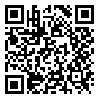Volume 4, Issue 1 (March 2025)
IJER 2025, 4(1): 77-88 |
Back to browse issues page
Download citation:
BibTeX | RIS | EndNote | Medlars | ProCite | Reference Manager | RefWorks
Send citation to:



BibTeX | RIS | EndNote | Medlars | ProCite | Reference Manager | RefWorks
Send citation to:
Bakhtiari G, Naseri N, Ghorbani M. (2025). Identifying and Prioritizing Dimensions of the Organizational Learning Model in Teachers of University of Applied Science and Technology. IJER. 4(1), 77-88. doi:10.22034/4.1.77
URL: http://ijer.hormozgan.ac.ir/article-1-204-en.html
URL: http://ijer.hormozgan.ac.ir/article-1-204-en.html
1- Department of Educational Sciences, Mashhad Branch, Islamic Azad University, Mashhad, Iran
2- Department of Educational Sciences, Mashhad Branch, Islamic Azad University, Mashhad, Iran ,naseri5586@mshdiau.ac.ir
2- Department of Educational Sciences, Mashhad Branch, Islamic Azad University, Mashhad, Iran ,
Abstract: (992 Views)
Objective: The purpose of this research was to identify and prioritize the dimensions of the organizational learning model in teachers of university of applied science and technology.
Methods: This research employed a mixed methodology, specifically an exploratory sequential mixed design, which was executed in two distinct phases: qualitative and quantitative. The qualitative aspect of the statistical population comprised the managerial and vice-presidential personnel at Razavi Khorasan Scientific-Applied University, along with university professors and domain experts, who were selected through purposive sampling, totaling 25 individuals. In the quantitative segment, the dimensions and components were derived from the interviews and subsequently formulated into a questionnaire, which was disseminated among the lecturer population of Razavi Khorasan Scientific and Applied University, numbering 3,680 individuals. Based on Morgan's table, a sample size of 351 individuals was determined. Descriptive and inferential statistical methods were employed for data analysis, while the qualitative phase utilized the Delphi method. Ultimately, structural equation modeling was applied to address the primary research question and assess the model's fit to the data.
Results: The results indicated that organizational learning encompasses four dimensions (commitment, continuous learning, empowerment, and knowledge management) and 19 components, with the dimensions of empowerment, commitment, knowledge management, and continuous learning ranked from first to fourth priority, respectively.
Conclusions: Consequently, it is imperative for managers and officials to establish a system that enables professors to remain abreast of contemporary information, knowledge, theories, and research findings.
Methods: This research employed a mixed methodology, specifically an exploratory sequential mixed design, which was executed in two distinct phases: qualitative and quantitative. The qualitative aspect of the statistical population comprised the managerial and vice-presidential personnel at Razavi Khorasan Scientific-Applied University, along with university professors and domain experts, who were selected through purposive sampling, totaling 25 individuals. In the quantitative segment, the dimensions and components were derived from the interviews and subsequently formulated into a questionnaire, which was disseminated among the lecturer population of Razavi Khorasan Scientific and Applied University, numbering 3,680 individuals. Based on Morgan's table, a sample size of 351 individuals was determined. Descriptive and inferential statistical methods were employed for data analysis, while the qualitative phase utilized the Delphi method. Ultimately, structural equation modeling was applied to address the primary research question and assess the model's fit to the data.
Results: The results indicated that organizational learning encompasses four dimensions (commitment, continuous learning, empowerment, and knowledge management) and 19 components, with the dimensions of empowerment, commitment, knowledge management, and continuous learning ranked from first to fourth priority, respectively.
Conclusions: Consequently, it is imperative for managers and officials to establish a system that enables professors to remain abreast of contemporary information, knowledge, theories, and research findings.
Type of Study: Original |
Subject:
Educational Studies
Received: 2023/09/15 | Accepted: 2024/05/23 | Published: 2025/03/1
Received: 2023/09/15 | Accepted: 2024/05/23 | Published: 2025/03/1
Send email to the article author
| Rights and permissions | |
 |
This work is licensed under the Creative Commons - Attribution 4.0 International. |







